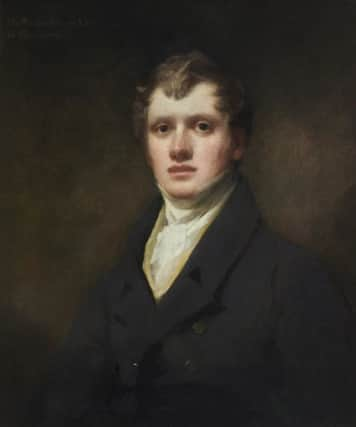Letter reveals Scot's role in abolition of slavery


An exhibition at Heriot-Watt University is to honour the efforts of William Gibson-Craig, nearly 200 years after he threw his weight behind a crucial vote in the House of Commons.
The legislation, which was passed in 1838 by only three votes, was the final act of parliament which secured the emancipation of slaves in the West Indies.
Advertisement
Hide AdAt the time of the vote, he was living with his father, James, at the family home on the Riccarton Estate, on the outskirts of Edinburgh, which would become the base for the university in 1969.
The exhibition centres on a private letter William wrote to his father, revealing how he had voted and the political machinations to try to thwart the abolition of slavery behind the scenes.
Born in Edinburgh in 1797, Gibson-Craig became an advocate in 1820, and held the key legal posts of Lord Clerk Register and Keeper of the Signet in Scotland from 1862 until his death in 1878. He was an MP from 1837 to 1852 and served as a Junior Lord of the Treasury for six years from 1846.
The exhibition was inspired by a chance discovery of the letter in a box of correspondence in the university’s archives by one its most celebrated academics, Jamaican-born Professor Sir Geoff Palmer, the first black professor in Scotland.
Palmer, who was knighted five years ago for services to science, human rights and charity, will be delivering a keynote speech, revealing Gibson-Craig’s role in the abolition of slavery, to coincide with the staging of the exhibition on Friday and Saturday.
Part of a nationwide Festival of Museums, it will explore how many families in Edinburgh either owned slaves or secured their wealth via the use of slaves in the West Indies, as well as the efforts of local campaigners for abolition.
Advertisement
Hide AdPalmer said: “I couldn’t believe it when I read it. I actually thought it was a fake at first, until I read the date on the letter, as I knew the importance of the date on the letter. It was written by William Gibson-Craig on the morning after the vote to tell his father what had happened, including the numbers who voted in favour of and against abolition.
“In his letter, he points out that the numbers – 96 in favour and 93 against – were very small and that a lot of MPs had not turned up, that the vote was held very late at night and his feelings that it had been mismanaged by the government.
Advertisement
Hide Ad“At the end of the letter, he states simply: ‘I voted with the majority and I would do so again.’ It is obvious to me that he realised that slavery was wrong, that it must end and that he didn’t care much for the politics of the time.
“There has been a lot written about William Gibson-Craig and his political career, but nothing has really been known about his views on slavery or his involvement in this vote until I came across this letter.”
Helen Taylor, archivist at Heriot-Watt University, said: “This particular letter had the day and the month on it, but not the year. It was with a bundle of other letters from 1841. It was only when Geoff read it that he realised what it was about and when it was written.”